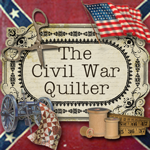It is so entertaining to read the descriptions by earlier generations of women's fashions.
I am writing this post simply because my attention was caught one day by the look of a worker's smock on a U.K. history website. (See first photo below.)
Source: http://www.reading.ac.uk/merl/the_collections/the_museum/smocks.html
The above photo of a farmer in a "smock" reminded me very much of a photo in our family archives. I immediately went digging and wa-la.....my grandmother in a very similar frock in 1921 shortly after my mother was born, only her smock is belted.

 (Left, my grandparents Crystal [nee Pauley] Peebles and Robert Peebles with my mother Elizabeth (Betty) Peebles, almost spring 1921, Miami, WVA.)
(Left, my grandparents Crystal [nee Pauley] Peebles and Robert Peebles with my mother Elizabeth (Betty) Peebles, almost spring 1921, Miami, WVA.)
Below is one image I found that very much resembles my grandmother's dress.
Source: http://www.fashion-era.com/visitor_pages/1917_shay_visitor.htm
Here is the American version of the British gentleman's smocked outfit I started with.
Above is amid-19th century smock from the Sturbridge Village collection.
Source: http://www.lexingtonminutemen.com/index.php?option=com_content&view=section&layout=blog&id=12&Itemid=68
Then I got curious about the style and googled around until I stumbled across the article below. The transcription follows the photo of the article.
So, do you think the "designer" of the dress my grandmother has on was inspired by the farmer's garment? Truth be told, howver, her dress is, unfortunately, not smocked.

Of Interest to Women
By MAROARRT MASON
(written for the United Press)
Dame Fashion knits a soldier's stocking:
With the yarn that's left she does her
smocking.
Now don’t you think this very shocking?
NEW YORK. July 15, 1916.
Perhaps along Ellis Parker Butler's line of reasoning that "Pigs is Pigs," you think that "smocks is smocks." But you are wrong. Smocks is no longer smocks. They are shocks. There is a new hybrid race, flock or swarm of them in a tiny little box of a shop on Fifth avenue. It offers hats, too, but the smocks are the real curios.
They are not any of them what you would expect a well regulated smock to be. Each one is rather the embodiment of a wild flight of fancy, to put it mildly.
They start out all right and proper in linen, pongee, crepe or cretonne but then comes the funny business. Some of them are appliquéd in a mad hit or miss riot of gay, colored linen disks outline-stitched with yarn. Others are patched in crazy quilt fashion and feather stitched with yarn. Always there is yarn, yarn, yarn in some of every color, stitch or fashion.
Some of the more decorous smocks have cut out patterns of the cretonne, baskets of flowers, birds or beasts appliqued at intervals around the skirt or on the pockets, and yet others have yarn crocheted scallops around the collar, cuffs and pockets. One of black satine is broken out so rashly in cart-sized and varicolored appliqued disks that it looks like a futurist companion piece to "A Nude Descending the Stairs." There are also some new sweaters or blazers quite as new as the smocks, but not quite so wierd. However, they put to shame for very stripedness both the zebra and the Sing-Sing habitant.
These striped sweater coats worn with the one-toned corduroy or linen skirt are a sort of vice versa flipflop or fashion from the one toned sweaters worn with awning striped skirts that were so omnipresent at the beginning of the season.
Although the stripes are riotous in their color effects, they are not so without rhyme or reason by any means. They are striped in regimental colors, and each daughter of the regi- ment may express by her coat of many colors her regimental preference.
For the patriotic preparedness person there are the stripes of red, white and blue, and her sentiments as well as her figure may thus be embodied in her garment. Regimental colors are a deal more exclusive, however, and express a preference not quite so broad and promiscuous. Worn with white skirts these gray striped sweater coats are particularly stunning, and there also are accompanying accoutrements of hats and parasols striped to match.
The expression “Oh, she is that stripe,” hereby gathers a new meaning and the regimental sweater offers, as well as warmth and adornment, a delightful modern method of wearing your heart on your sleeve by wearing instead HIS stripes.
Verily, no regiment would fail to present arms to such color bearers.
Now wouldn't you just love to see some examples of those " appliquéd in a mad hit or miss riot of gay, colored linen disks outline-stitched with yarn. Others are patched in crazy quilt fashion and feather stitched with yarn. Always there is yarn, yarn, yarn in some of every color, stitch or fashion"?!
~~~~
I can sure tell I don't know a whole lot about the history of dress design! It took forever to find that plaid dress image that resembles my grandmotehr's dress. Do check out the link for the plaid dress for some background for the era 1914-1920 in "ordinary" women's dresses.
Happy hunting to you in whatever kind of collecting or research you do!
Karen











great links, thank you
ReplyDeleteSmocking is similar to gathering, but not the same. You have to gather to smock, but don't have to smock to gather. Try FOLKLORE patterns, they have grat vintage and historical patterns. Yes, your grandmother's dress is gathered. Not smocked. You're right. You might like to look at my blog at The Round Garden at blogspot. I like your blog a lot, good work/play. loo
ReplyDeleteThank you for stopping by and leaving a comment. I am so glad you enjoy reading my work. I could write a lot more....like daily....but that would mean I wouldn't get other stuff done.
Delete